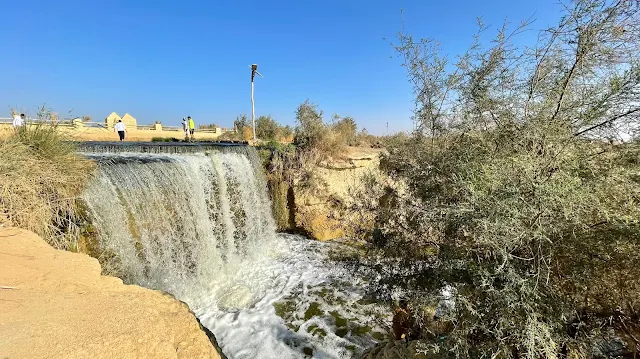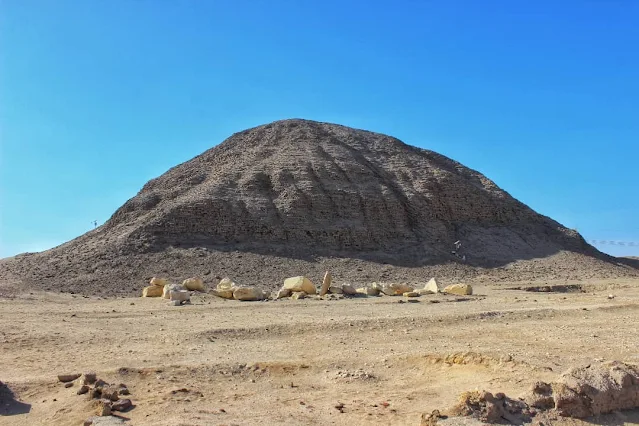Fayoum A Hidden Gem in Egypt
If you're looking for a destination in Egypt that's off the beaten path, consider visiting Fayoum. This lesser-known region is located about an hour's drive southwest of Cairo and offers a wealth of natural and cultural attractions.
One of the most unique features of Fayoum is its vast network of lakes and wetlands. The largest of these is Lake Qarun, which covers an area of more than 200 square kilometers. This lake is an important habitat for a variety of bird species, including flamingos, pelicans, and herons. Visitors can take boat tours to explore the lake and its surrounding areas, or go birdwatching from one of the many observation points.
Another natural wonder in Fayoum is the Wadi El-Rayan Protected Area. This area is home to two interconnected lakes, as well as several waterfalls and natural hot springs. Visitors can swim in the lakes or take a dip in the hot springs, which are believed to have therapeutic properties.
Fayoum also has a rich cultural heritage, with many historical sites and museums to explore. One of the most notable is the Temple of Sobek. This temple dates back to the Ptolemaic period and is dedicated to two ancient Egyptian gods, Sobik .
How to Explore the Wonders of Fayoum?
if you're looking for an extraordinary experience off the beaten path, then Fayoum is the place to be. Located just a couple of hours away from Cairo, this oasis offers a range of activities and attractions that will satisfy any traveler's desire for adventure and relaxation.
In this guide, we'll take you through some of the most spectacular sights and experiences that Fayoum has to offer, from its rich history and ancient ruins to its natural wonders and breathtaking landscapes.
Discovering the History of Fayoum
The Fayoum region has a rich history dating back to the Pharaonic era. Among the most famous ancient ruins in the region is the Pyramid of Hawara, built by the Pharaoh Amenemhat III, which is known for its impressive architecture and its labyrinth-like structure.
Another must-see historical site in Fayoum is the Temple of Sobek and Haroeris, located in the town of Kom Ombo. This ancient temple dates back to the Ptolemaic era and is dedicated to two Egyptian deities, Sobek, the crocodile-headed god, and Haroeris, the sun god.
Hawara Fayoum and the Labyrinth
Hawara Fayoum and the Labyrinth are two fascinating ancient Egyptian sites that offer a glimpse into the rich history and culture of this remarkable civilization. The Hawara Fayoum complex, located southwest of Cairo, consists of a pyramid, a temple, and a series of underground tunnels and chambers that were used for funerary purposes. The pyramid is believed to have been built during the reign of Amenemhat III, while the temple was added later by his successor, Amenemhat IV.
The Labyrinth, on the other hand, is a sprawling complex of interconnecting chambers and passages that has puzzled archaeologists and historians for centuries. It is said to have been built by the legendary King Amenemhat III, and was described by the ancient Greek historian Herodotus as "a wonder to behold." The purpose of the Labyrinth is still unclear, but it is believed to have been a royal palace, a temple, or even a burial site.
Exploring these two sites is a truly unique experience that allows visitors to immerse themselves in the ancient world of Egypt. The intricate carvings, hieroglyphs, and architectural feats of the Hawara Fayoum and the Labyrinth are a testament to the skill and creativity of the Egyptian people, and offer a glimpse into their beliefs, traditions, and way of life.
Visitors to Hawara Fayoum can explore the underground tunnels and chambers, which are known for their intricate decorations and the impressive engineering that was required to construct them. The temple at Hawara Fayoum is also worth a visit, as it is one of the few surviving examples of Middle Kingdom temple architecture.
the Labyrinth is a maze-like structure that has fascinated people for centuries. The ancient Greeks believed that it was home to the legendary Minotaur, a half-man, half-bull creature that devoured human sacrifices. While this myth has been debunked, the Labyrinth remains a mystery to this day, with many unanswered questions about its purpose and function.
Beyond their historical significance, Hawara Fayoum and the Labyrinth also offer breathtaking views of the surrounding desert landscape. The contrast between the yellow sand and the dark stone structures creates a striking visual spectacle that is sure to leave a lasting impression on visitors.
But the sites are not without their challenges. The harsh climate and difficult terrain can make exploration a daunting task, and visitors should take precautions to stay safe and comfortable during their visit. It is also important to respect the cultural and historical significance of these sites and to follow any rules and guidelines that are in place.
Despite these challenges, a visit to Hawara Fayoum and the Labyrinth is a truly unforgettable experience that is sure to leave a lasting impression. Whether you are a history buff, an adventure seeker, or simply someone who appreciates the beauty of ancient architecture, these sites are not to be missed. So why not add them to your bucket list and start planning your Egyptian adventure today?"
Book your visit now 01001918549





No comments:
Post a Comment